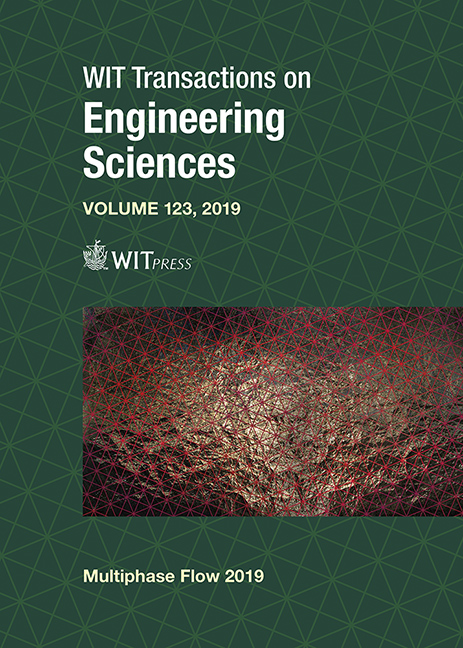GEOMETRIC VERSUS KINETIC MODELLING APPROACH FOR CHARACTERIZING POROUS METAL FOAMS
Price
Free (open access)
Transaction
Volume
123
Pages
12
Page Range
191 - 202
Published
2019
Size
529 kb
Paper DOI
10.2495/MPF190181
Copyright
WIT Press
Author(s)
ESMARI MARÉ, SONIA WOUDBERG
Abstract
Knowledge of the geometric and kinematic parameters of porous foams are of great importance since it is used in a wide variety of industrial multiphase flow applications that require optimal functionality, e.g. gas filters, heat exchangers and catalyst supports. The large external surface area and high porosity of metal foams provide good chemical resistance, enhanced heat and mass transfer properties and low pressure drops. Four generic geometric models will be considered to characterize the metal foam geometry, namely the cubic unit cell, tetrakaidecahedron, dodecahedron and rectangular representative unit cell (RUC) models, as well as three kinetic approaches from the literature in order to predict the specific surface area (SSA). Two sets of experimental data from the literature will then be compared to the SSA model predictions of the geometric approach and to the SSA values obtained from the kinetic approach. A comparative analysis reveals that the most geometrically complex tetrakaidecahedron model indeed provides the best correspondence with the experimental data for the SSAs, followed by the geometrically simplest RUC model. The latter model, in addition, provides accurate results for the kinetic approach. The advantage of the RUC model is that it is the only geometric model that provides both a geometric and kinetic approach, and, as a result of its relatively simple geometry it is geometrically adaptable towards anisotropy. The Klinkenberg effect will also be considered to determine the influence on the predictions of the SSAs dependency on the permeability coefficients for different fluid phases.
Keywords
metal foams, specific surface area, Klinkenberg effect, permeability, porous media, porosity, Knudsen, flow





